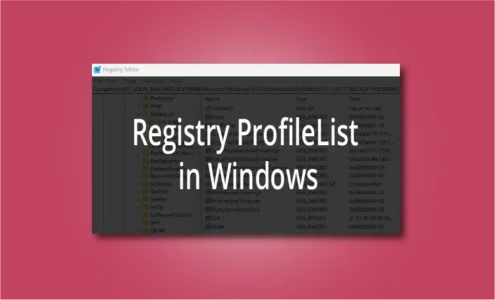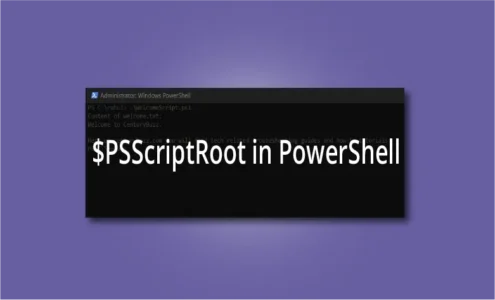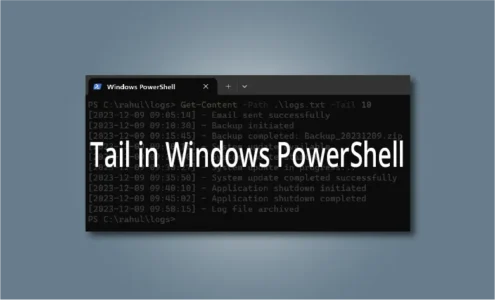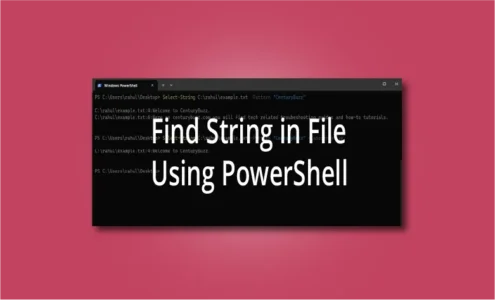Exploring Alternate Data Streams on Windows Using PowerShell
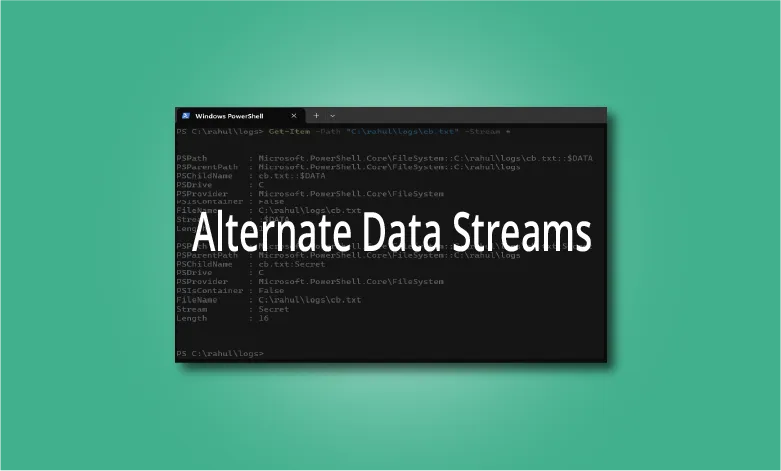
In the vast landscape of Windows functionalities, there exist hidden nooks and crannies that often go unnoticed by the everyday user. One such feature is Alternate Data Streams (ADS), a lesser-known aspect of the Windows NTFS file system.
These streams allow additional data to be associated with a file, enabling a layer of complexity and potential utility beyond the standard file attributes. With PowerShell, one can delve into this intriguing realm to explore, manage, and understand Alternate Data Streams effortlessly.
What is an Alternate Data Stream?
Before diving into PowerShell commands, let’s demystify what Alternate Data Streams are.
In the NTFS file system, every file has at least one data stream, known as the primary data stream. However, ADS allows the attachment of multiple streams of data to a single file, often without the user’s knowledge. These streams aren’t visible through typical file browsing methods, making them somewhat elusive.
Exploring ADS Using PowerShell
PowerShell provides a window into the world of Alternate Data Streams. With just a few commands, users can uncover, manipulate, and manage these hidden data streams.
Note: Make sure to replace “C:\Path\To\File.txt” with an appropriate file location in all the commands mentioned in this article.
Viewing ADS
To begin the exploration, open up a PowerShell terminal and use the “Get-Item” cmdlet to view the streams associated with a file:
Get-Item -Path "C:\Path\to\File.txt" -Stream *
The above command displays all the streams attached to the specified file, revealing any additional data streams that might be present.
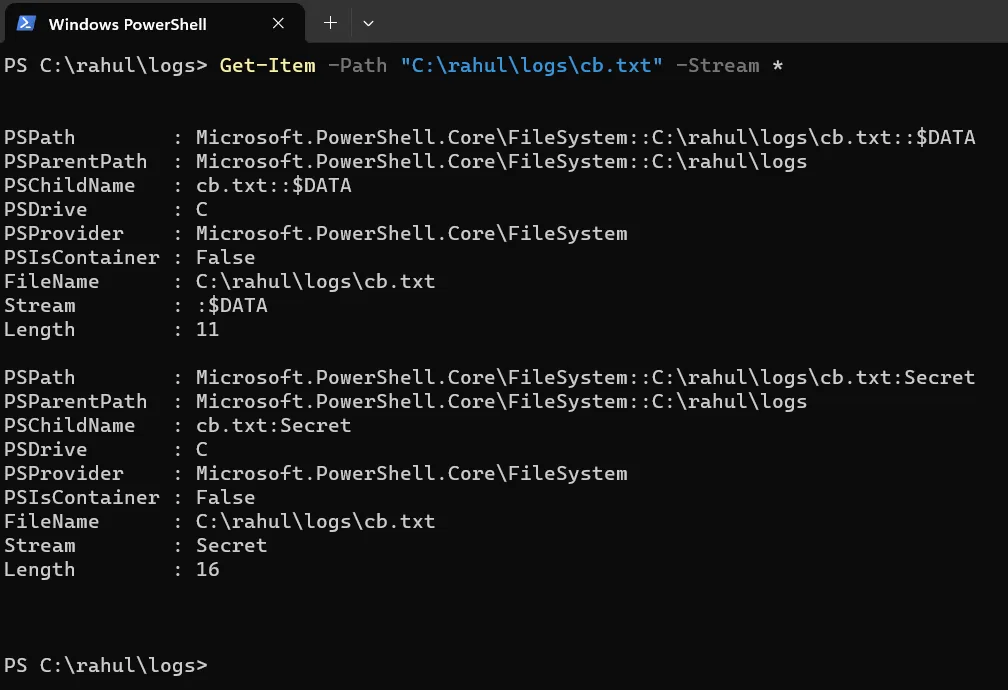
Now, use the “Get-Content” cmdlet to view the content of a specific data stream.
Get-Content -Path " C:\Path\to\File.txt" -Stream Secret

Create an Alternate Data Stream
Creating a new ADS is straightforward:
"Some additional data" | Set-Content -Path "C:\Path\to\File.txt:ADSName"
This command will attach the string “Some additional data” as an Alternate Data Stream named “ADSName” to the File.txt.
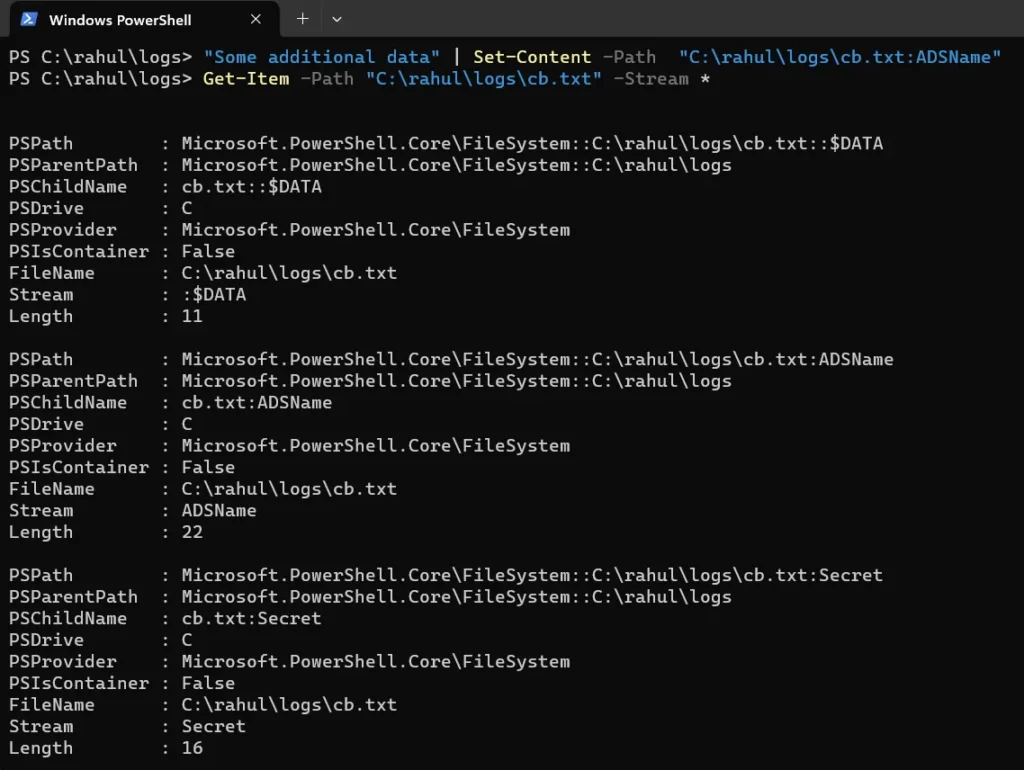
Alternatively, you can use the “Add-Content” cmdlet to create an ADS.
Add-Content -Path "C:\Path\To\File.txt:NewSecret" -Value "New Secret content"
This command appends “New Secret content” to the file’s alternate data stream named “NewSecret”.
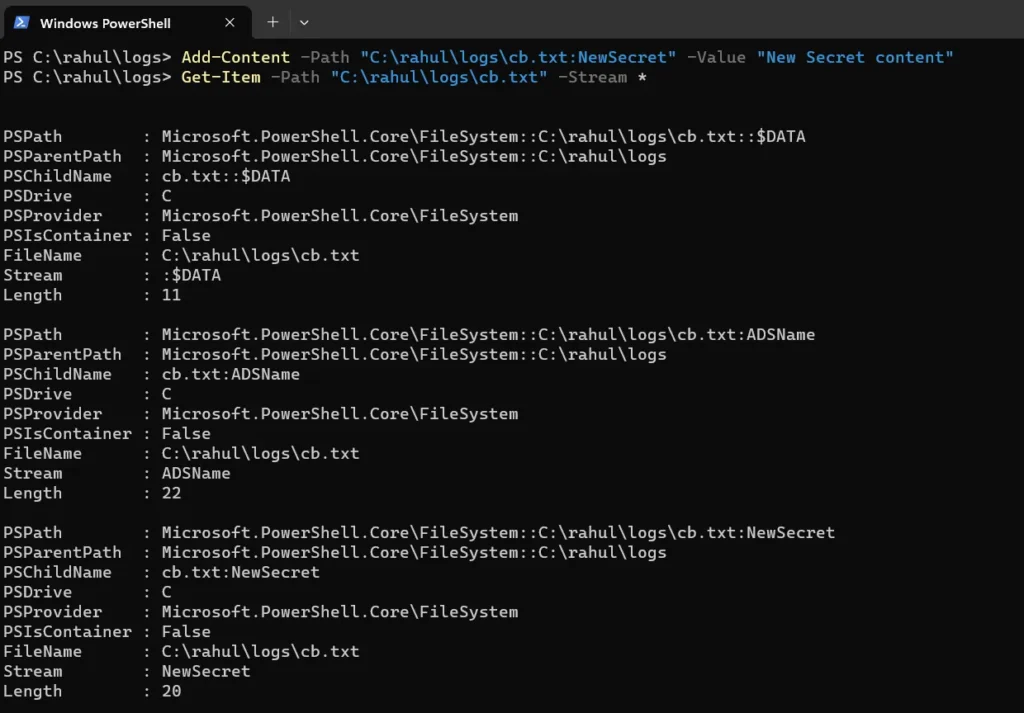
Delete Alternate Data Stream
To delete a specific ADS associated with a file, PowerShell offers the “Remove-Item” cmdlet:
Remove-Item -Path "C:\Path\to\File.txt:ADSName"
This removes the specified ADS from the file.
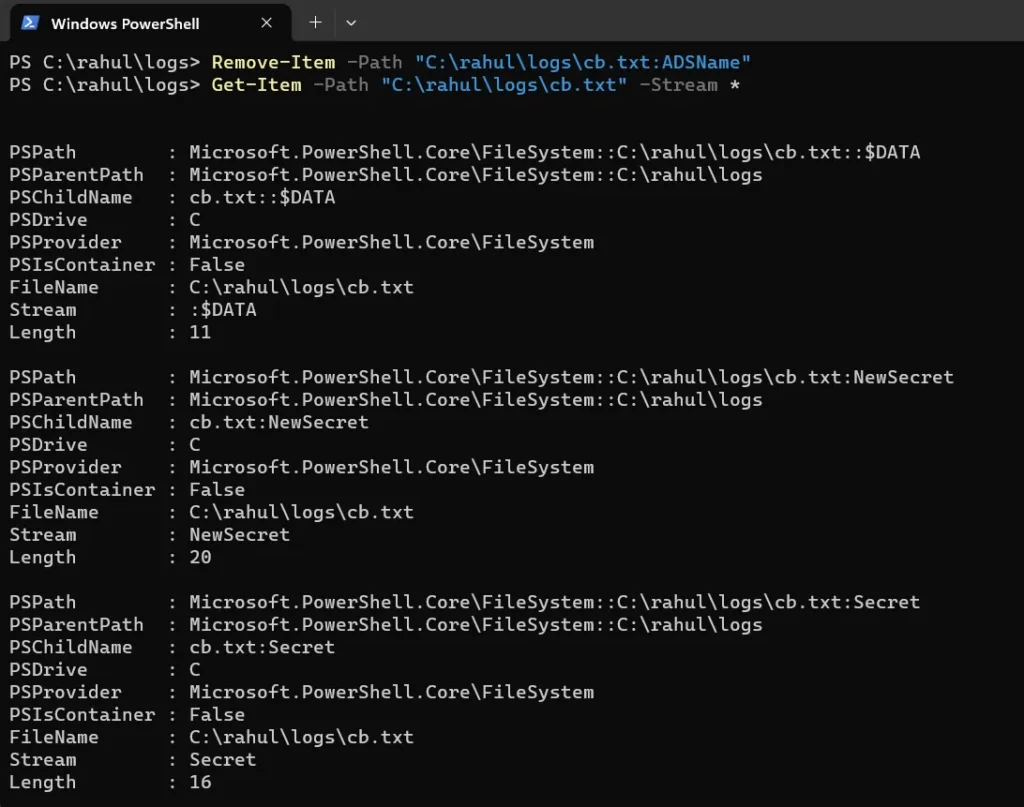
Unblock-File
In PowerShell, the “Unblock-File” cmdlet is useful when dealing with files potentially blocked due to their origin, such as those downloaded from the internet.
It removes the “Zone.Identifier” alternate data stream, which designates a file as potentially hazardous based on its source.
Here’s an example of the file downloaded from the internet:
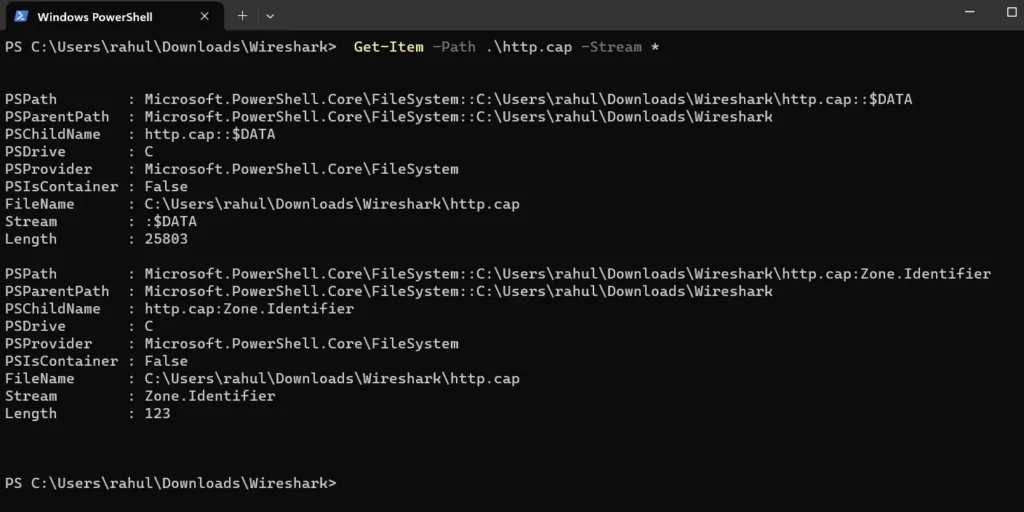
And here’s the data of “Zone.Identifier” stream that you can view using the “Get-Content” cmdlet:

Now, let’s remove the “Zone.Identifier” Using Unblock-File :
Unblock-File -Path "C:\Path\to\Downloaded\File.txt"

As you can see, the command has removed the “Zone.Identifier” stream, allowing the file to be executed without security warnings. Therefore, it’s important to use “Unblock-file” cmdlet with caution.
Practical Applications and Security Implications of ADS
Understanding ADS is crucial for system administrators, forensic analysts, and cybersecurity professionals. Legitimate uses include storing additional file information or attaching metadata. However, malicious actors can exploit ADS to conceal malware, making detection challenging.
Moreover, the “Unblock-File” cmdlet is invaluable in handling files that might be blocked due to security settings, allowing users to execute or utilize these files without hindrance.
Security tools and antivirus software that overlook ADS might miss potential threats. Hence, learning to navigate ADS using PowerShell equips users with the means to uncover hidden files or potential security risks.
Conclusion
Alternate Data Streams harbor a concealed world of data. PowerShell serves as a powerful tool for unmasking and managing these streams, enabling users to peek into hidden information associated with files.
By mastering PowerShell commands to access and manipulate ADS, users can enhance their understanding of file structures, bolster security measures, and fortify their ability to detect hidden data or potential threats lurking within the Windows environment.
If you like this post, then follow CenturyBuzz on Facebook and X (Twitter) for more reviews, tips and tutorials.
